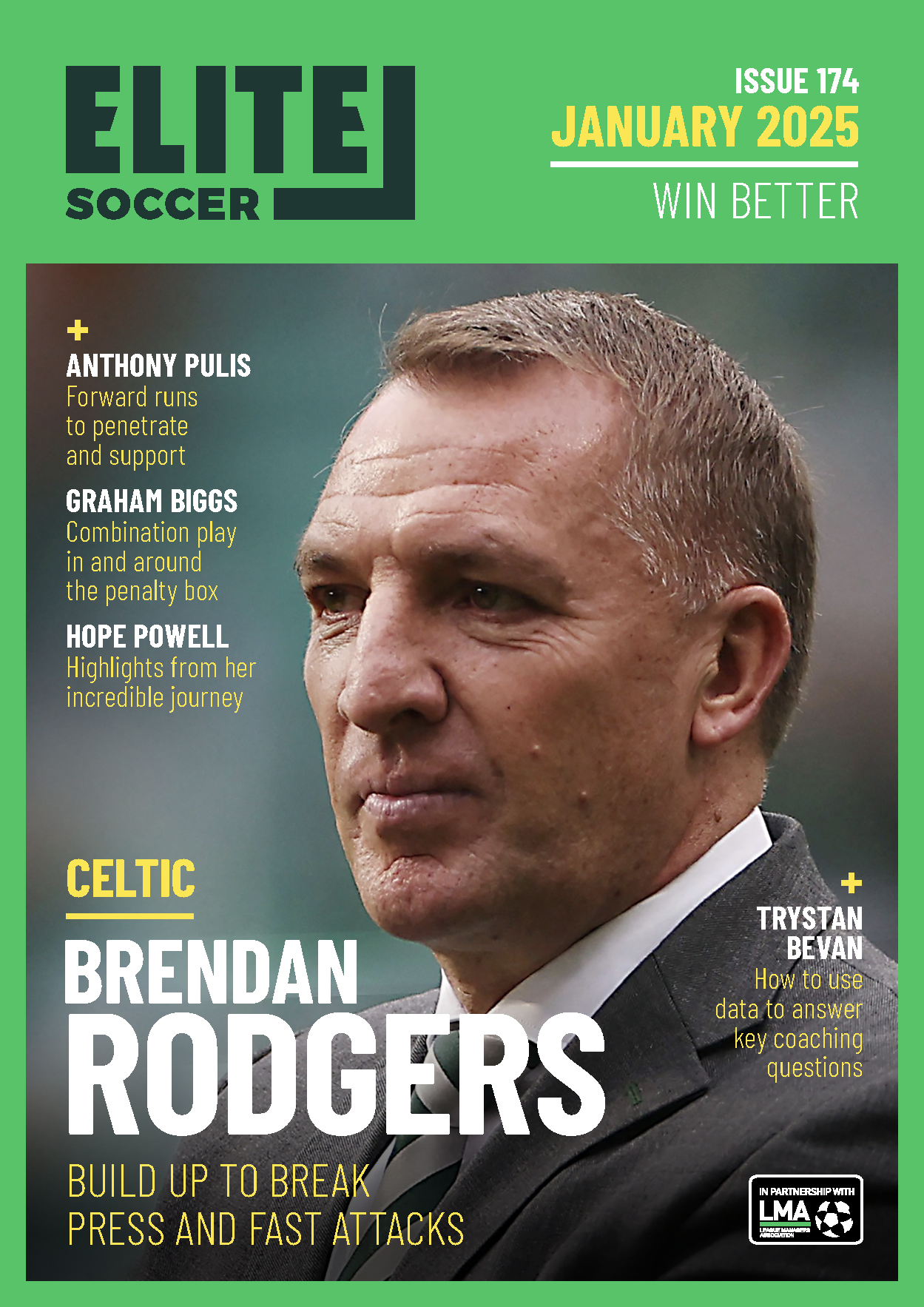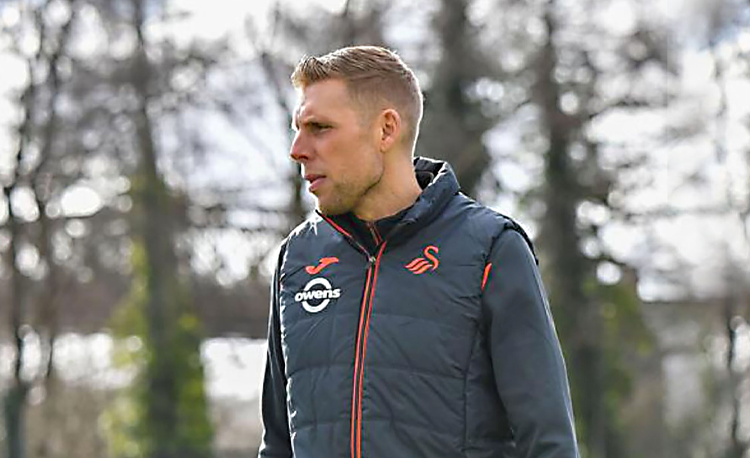You are viewing 1 of your 1 free articles
Overloads in attacking play
Breaking down and dominating the opposition backline is essential if a team is going create genuine goalscoring chances in games.
| Area | Full pitch |
| Equipment | Cones, balls |
| No. of Players | 22 |
| Session Time | 3v2s 10mins, 4v3s 15mins, Overload build-up 20mins |
Breaking down and dominating the opposition backline is essential if a team is going create genuine goalscoring chances in games.
Opposition teams will often set out looking to adopt a very defensive mindset, especially at the start of matches. Therefore being able being able to find a way through with positive and dynamic overload play is a fantastic weapon to have.
What do I get the players to do?
3v2 in and around the box
In a third of the pitch, we start with two defenders inside and three attackers outside the area. The coach feeds in to a defender, who plays the ball out to an attacker (1a) . This player must link up with his team mates to fashion a 2v1 situation, as highlighted (1b), overcoming the lone defender then supplying the striker - who is 1v1 – for a positive end product. To keep things fresh we’ll rotate defenders and attackers.
1a
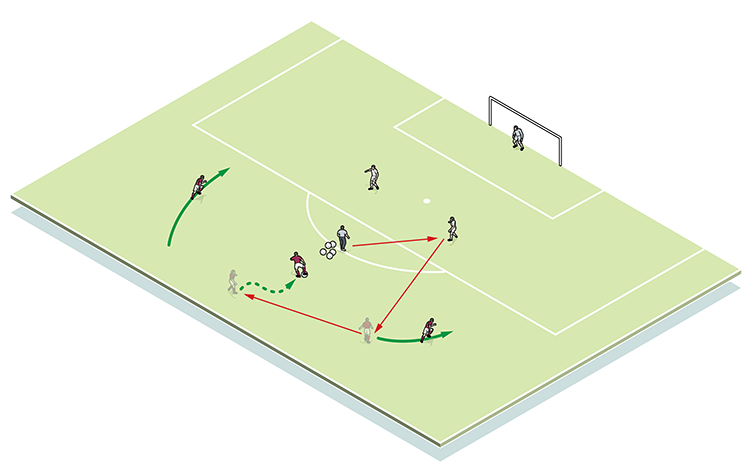
1b

4v3 overload
We divide a 72x44yard space in four. Attackers start in areas 1 and 3, while defenders begin in 2 and 4 - three players in each. The keeper serves into area 1, and an attacker passes through to area 3, with a team mate advancing for a 4v3 overload in that half (2a). Defenders can advance up to the halfway line in attempting to block the attack.
2a
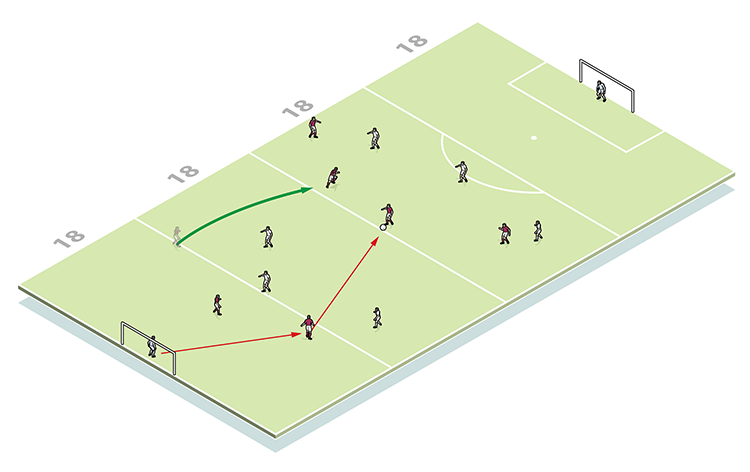
If play is turned over, we either signal a restart or allow the counter-attack (2b).
2b

Overload build-up play
The last game is played in the space between the two penalty areas. The area is split into thirds – clarets set-up as a 4-3-3 while whites are 4-4-2.
Again, the same principles apply, so in the first third it’s 4v2, with two full-backs moving forward with the ball to form a 5v4 overload in the middle zone (3a). In the final third, two progressing midfielders create a new 5v4 (3b). Attackers are therefore always switching overloads in their favour, looking to exploit mini 2v1 situations in each third. We again have the option of restarting with the keeper or allowing a counter-attack to develop in the opposite direction.
3a
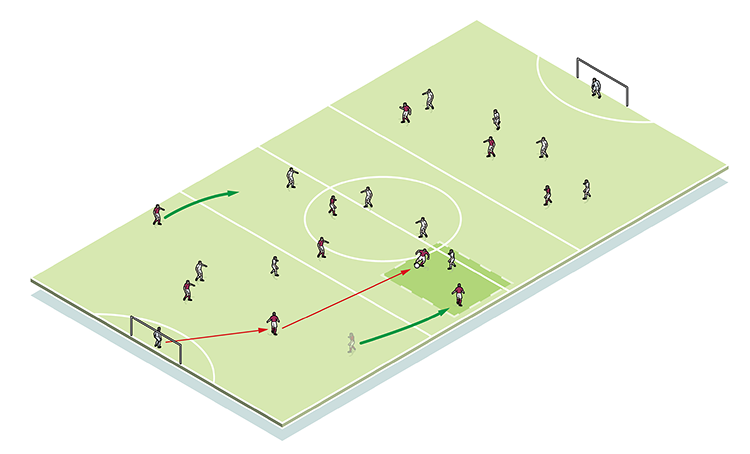
3b

What are the key things to look for technically/tactically?
We require good movement in manufacturing 2v1 situations at every opportunity, and a worthwhile end product – a shot, pass or cross.
For defenders, shape is important – when repelling a planned attack that starts with the opposition keeper, but also when players have to regroup quickly in the event of a counter-attack.
Related Files
Editor's Picks
Using the goalkeeper in build-up play
Pressing principles
Intensive boxes drill with goals
Penetrating the final third
Creating and finishing
My philosophy
Pressing initiation
Compact team movement
Defensive organisation
Coaches' Testimonials

Alan Pardew

Arsène Wenger

Brendan Rodgers

Carlos Carvalhal

José Mourinho

Jürgen Klopp

Pep Guardiola

Roy Hodgson

Sir Alex Ferguson

Steven Gerrard
Coaches' Testimonials

Gerald Kearney, Downtown Las Vegas Soccer Club

Paul Butler, Florida, USA

Rick Shields, Springboro, USA

Tony Green, Pierrefonds Titans, Quebec, Canada
Join the world's leading coaches and managers and discover for yourself one of the best kept secrets in coaching. No other training tool on the planet is written or read by the calibre of names you’ll find in Elite Soccer.
In a recent survey 92% of subscribers said Elite Soccer makes them more confident, 89% said it makes them a more effective coach and 91% said it makes them more inspired.
Get Monthly Inspiration
All the latest techniques and approaches
Since 2010 Elite Soccer has given subscribers exclusive insight into the training ground practices of the world’s best coaches. Published in partnership with the League Managers Association we have unparalleled access to the leading lights in the English leagues, as well as a host of international managers.
Elite Soccer exclusively features sessions written by the coaches themselves. There are no observed sessions and no sessions “in the style of”, just first-hand advice delivered direct to you from the coach.



